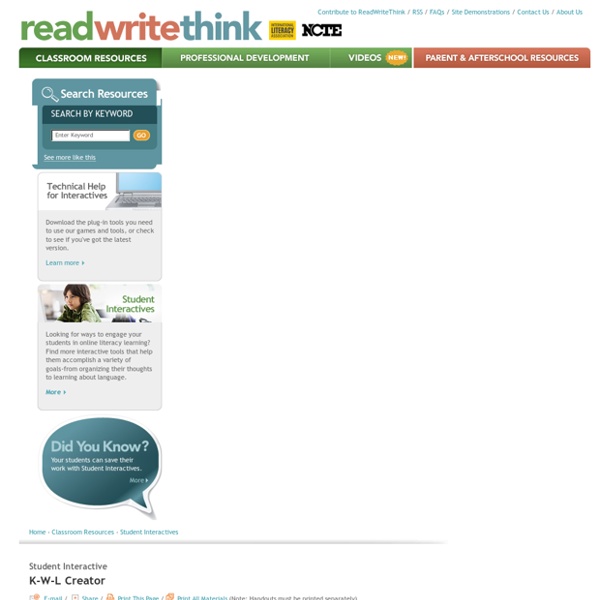K-W-L Creator

Convert Files - free online file converter and flash video downloader.Convert videos, audio files, documents and ebooks.Flash video to MP3
OER Commons
literacy beat | Literacy, technology, intersections
Teacher’s Guide Series | The Academy
Home : Education & Outreach : Teacher’s Guide Series The Academy, in cooperation with Young Minds Inspired, produces a series of teacher's guides that explore the art and science of motion pictures. The activities are designed to capitalize on students' natural interest in current films and the excitement generated by the Academy Awards to teach valuable lessons in critical thinking and creative writing, and to develop visual literacy skills. Each teaching guide is available in its entirety to download and print. The guides are made available to more than 19,500 U.S. high schools throughout the United States, reaching 39,600 teachers and nearly 2.4 million students. Teacher's Guides
Related:
Related:




This organizer is to be used throughout the entire reading process (before, during and after). It should be used first to activate background knowledge. It is savable and can also be printed to use as a hard copy.
Teaching Tips
versatile tool that can be used in any genre and throughout content areas
can be used classwide on a projector or by students indivudually, paired or grouped
use what students already know to give the teacher the best place to start. by k3nolen Sep 28